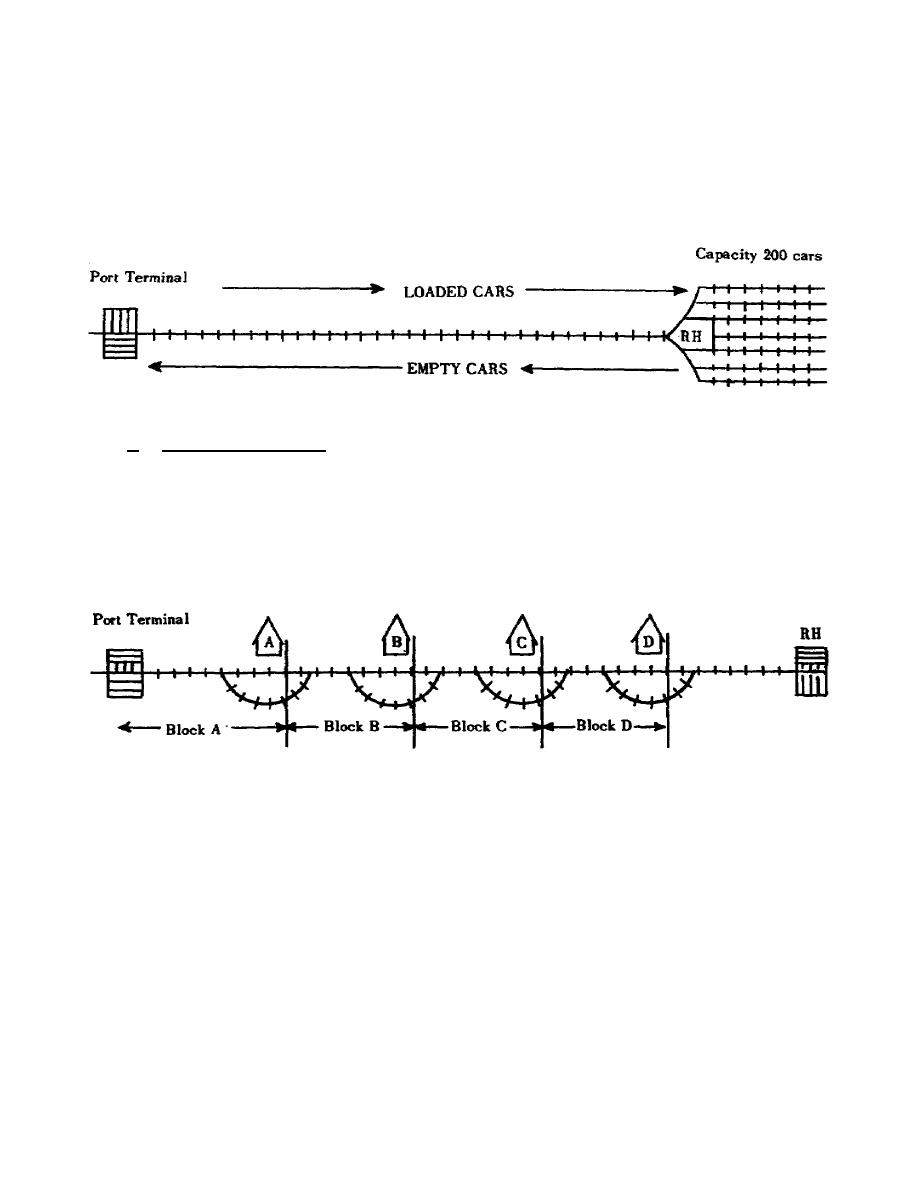
and sidings are the same. As the inserted sketch shows, in this
method, you run loaded trains forward until the tracks at the
railhead are full, unload the trains, and return them empty to the
port or point of origin. Fleet operation is an emergency measure and
should be discontinued as soon as possible. It is limited by the
capacity of the railhead, and the grouped trains present a good
target for the enemy.
b. Block operation. Once sidings or passing tracks are provided
but before communications become dependable, block operation is used.
In this method, the railroad is divided into blocks with a station at
the end of each block, as shown in the inserted sketch. The TRS
trainmovement operator, or station agent, authorizes each train to
enter the block of track under his control. A passing track must be
located at each station so that the waiting
Block Operation
train can clear the main line and permit the train occupying the
block to meet and pass. Two types of block methods are used:
positive and permissive. In positive block, the use of the block is
limited to one train at a time. Permissive block operation permits
more than one train moving in the same direction to occupy one block
of track at one time. The second method is more efficient than the
first, but the positive block method has definite security
advantages. A train operating under positive block control can stop
if it is attacked or the line is obstructed and, if necessary, back
up to the last station it passed or to a safe place and wait until
the track is
16



 Previous Page
Previous Page
